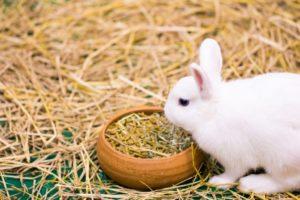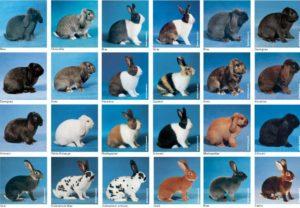How to properly pick up a rabbit and stroke, timing and stages of human habituation
Soft and delicate fur, touching appearance of rabbits are pleasant to people - many choose them as pets, especially if households are allergic to traditional cats and dogs. After acquiring an eared animal, you need to be patient and take the time to tame, establish contact and education. Consider how to teach a decorative rabbit to hand, to make communication with a pet safe and pleasant.
Are decorative rabbits trainable?
Any rabbit can be accustomed to certain actions and behavior; even ordinary (non-decorative) individuals can be trained. So that the owners do not lose patience and optimism in the process of training, we recall that training for the development and consolidation of conditioned reflexes involves multiple repetitions.
A rabbit's wits alone are not enough, it will take time for the animal to get used to acting automatically, not to be afraid of the owner, to know how to behave. A pet needs grooming - this is the main reason why domestication and training is necessary.
In nature, the relatives of decorative rabbits live in families united in colonies, they are collective animals. Ears are accustomed to the team, they need communication. In the absence of relatives, the pet will be friends with the owners, who will replace his family.
Factors influencing the taming process
The owners want not only to establish contact with the pet, tame, but also instill certain skills that will facilitate living together. Not all rabbits are equally easy to train, and there are a number of factors that affect the learning ability of an animal.
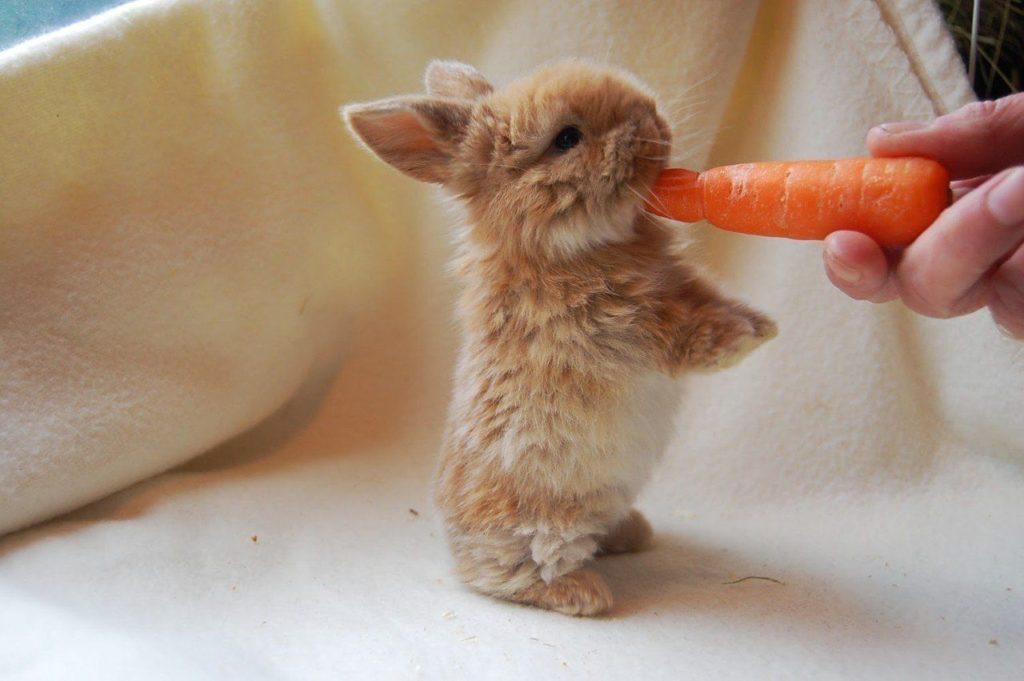
Age
The younger the pet that comes into the house, the easier it is for him to perceive the requirements of the owner. The kid grows up, feeling the smells of the house and people, like family, familiar. She learns the rules, like her mother, considers them natural and necessary. The rabbit perceives the household members as an ordinary family, as elders, from whom it is necessary to adopt knowledge and skills.
Health
A sick rabbit suffers, is closed on its feelings, does not make contact well. When purchasing a pet, you need to check the eyes, ears, make sure that the fur is shiny and even. A sick baby will have to be treated, the time for training will be lost.
Genetics
The hereditary factor is one of the main ones. If the rabbit's parents are contact, well trained, the owners managed to instill in them the skills of living with a person, then the little animal will easily follow in their footsteps.
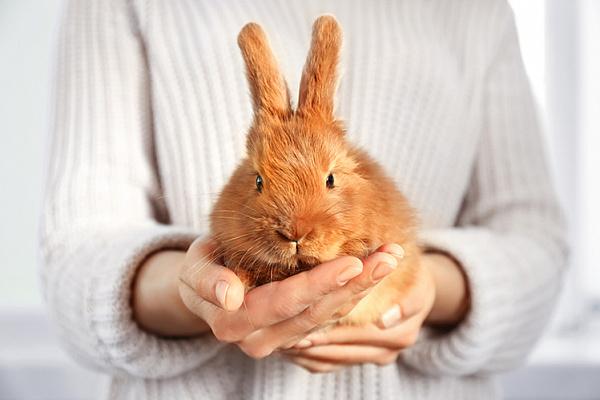
Advice: it is better to acquire a pet by first looking at its parents, realizing how well-educated and friendly they are to people. Genetics will play a role.
What is the correct way to handle and pet your pet?
To make caresses and games with a pet pleasant not only to a person, the rabbit liked communication, you should learn to take it in your arms without causing horror and pain. You should not, like a magician, grab the pet by the ears, pull it out of the cage or off the floor. The fingers or palm are brought under the front paws from the side of the abdomen, raised, supporting the back of the body. If the rabbit has not yet got used to it, you should not do it abruptly, with cries of delight.
Even a child for a small pet is a huge, noisy creature that looks like a predator. The instinct demands to perceive attempts to grab, to take in hand, as a danger. You need to be careful with a rabbit so as not to frighten with harsh sounds and actions.
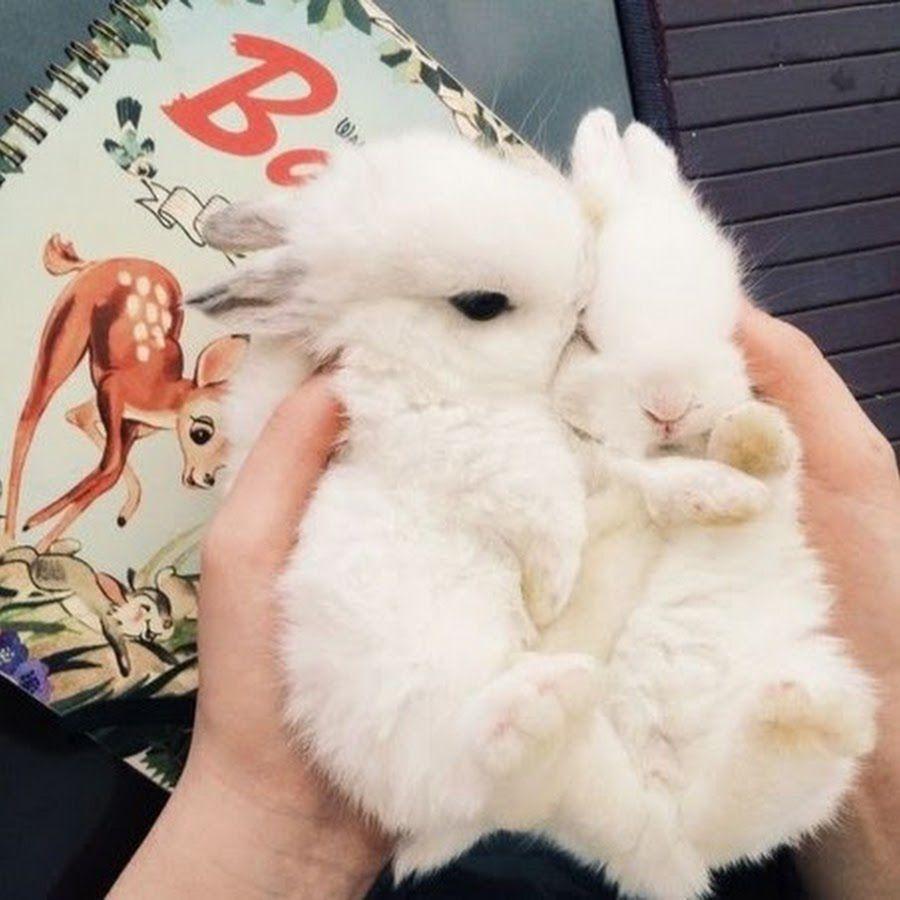
How to tame a rabbit
Domestication requires patience, friendliness, and trust. You should not deal with a sick rabbit, it is better to postpone classes when the pet is recovered and is in a cheerful mood. Domestication is a process that needs to be started on time and not forced. Each animal has character traits - some get used quickly, differ in contact, others - it will take time to get used to and make friends with their pets.
Main stages
The first days in the house should be spent in a warm, quiet environment - the rabbit needs adaptation. The animal must get used to new noises, smells, conditions of detention. A cozy cage should be a place where your baby feels safe. No need to congregate around the rabbit house, pick up, examine, stick your fingers in, and pull the animal out. You need to accustom your pet to your voice, talk calmly, like with a child. If the rabbit shows interest, looks out, reacts to the voice, you can give him carrots or a piece of apple.

The initiator of communication in the first days should be a pet; there is no need to forcefully drag him into contact. Gradually, the communication time is increased, observing the following rules:
- It is better not to hang over the baby, to be on the same level with him. To do this, the cage is raised on a table or they sit on the floor themselves.
- They open the cage, give the opportunity to go out - to leave the safe corner.
- They are taught in the hand - they are slowly fed from the side of the face, they are gently brought closer without rapid movements. Give to lick, touch yourself. In this case, it is better to keep something tasty.
- Stroking begins when the animal is accustomed - gently touch the back, neck, head. From the side of the muzzle, they do not give a hand, they do not stroke under the mouth.
- During the establishment of contact with the animal, they speak quietly, when addressing, they clearly pronounce the invented name so that the baby gets used to the nickname.
- If the baby shrinks into a ball, freezes in horror, he is left alone, allowed to come to his senses, or immediately returned to the cage.
- Eeyore is allowed to walk if he is not afraid to move away from the cage. The door is not closed so that the rabbit can return to the house at the first desire.
The main thing in establishing warm relations with a new family member is patience, caution, benevolence, gradualness. When communicating, they do not use perfume - the animal must master the smell of a person.
Advice: adult family members should establish contact with the baby. Children begin to communicate when the animal ceases to be shy, gets used to the elders.
Hygienic procedures (combing, clipping) are carried out when the animal is used to the owner, has adapted to new conditions. Domestication is considered successful if the animal calmly leaves the cage, readily makes contact, allows itself to be stroked, sits in its arms without fear.

Timing of domestication
How quickly the rabbit will feel comfortable and take root in the house depends on the characteristics of the animal, its contact and people's efforts, their patience and perseverance. Some babies become fully accustomed after a few days, willingly sit on their hands. Sometimes it takes weeks or even months to tame.
Possible causes of aggression
Usually decorative rabbits are distinguished by a kind disposition, they gladly allow themselves to be caressed, there are no problems with them. They bite when trying to stroke or feed from the hand, grab the legs from around the corner, hurt them with their long hind legs - all these are examples of inappropriate animal behavior.
Why your pet may exhibit aggressive behavior:
- the deep-rooted fear of a person, if the animal was treated roughly - they shouted, beat, hurt;
- females become angry due to hormonal surges during pregnancy, after the appearance of cubs - they fear for the offspring;
- hormonal changes during puberty, the desire to mate, cause sharp activity, jumping, animals bite, grab legs, circle around the owner.
The reason must be determined in order to figure out how to deal with an unfriendly pet. What may be required to calm the animal:
- The reason is sexual problems. Find a pair or neuter the pet.
- Provide isolation for a sparse or pregnant female, reduce contact with her, do not get nervous by affection and communication.
- The intimidated rabbit will have to be re-educated, convinced with affectionate treatment in complete safety. Screams, scandals in the family make the animals nervous, they feel aggression. It is useful to establish peace at home, to treat the pet kindly. Gradually, the animal will calm down, stop being afraid, and become less aggressive.
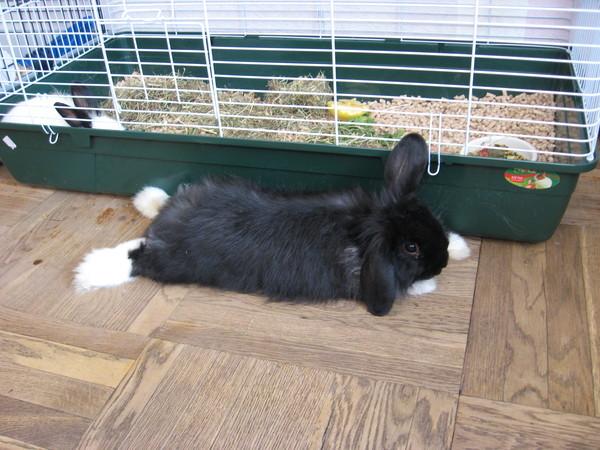
An uncontrollable bully can be intimidated - pressed to the floor, shown who is the real owner in the house, and who is a pet. Rabbits are quick-witted, they can be taught a lot of tricks, with due perseverance, it is quite within the power of man to wean them from bad habits.
Breeds that are easy to tame
Rabbits of decorative breeds have a cute appearance and kind disposition. Breeders specially bred animals intended for home keeping and close communication with humans. The following breeds are easy to tame, have an agreeable character and a touching appearance:
- Dutch dwarf. An active and friendly creature quickly gets used to its owners. Weight - 1.2-1.5 kilograms. Ears are small, varied in color. Loves communication with a person, but if there are small children in the house, it is better to choose a different breed.
- Lionhead. Elongated hair on the head looks like a lion's mane, for which the breed got its name. They have a soft, conflict-free nature, they are attached to the owners.
- Fold Dutch. Long, drooping ears give your pet a special touch. They live up to 10 years old, are distinguished by a kind disposition, aversion to aggression.
- Dwarf ram. Large eyes and bulging forehead make the pet look like a lamb. Ears fall by 3 months - this is a lop-eared breed. Persistence, independence and distrust are traced in the character, although they get along with the owners.
- Dwarf butterfly. A cute creation in white with contrasting spots. Rabbits are playful, nimble, curious.
- Dwarf Rex. Calm, phlegmatic creature with plush fur, pleasant to the touch. Suitable for the role of a pet in families where peace is appreciated.
- Hermelin. The breed is also called Polish. Snow-white pussies have soft fur, red or blue eyes. Females are more active than males. Pets are calm, friendly, feel good in a large family.
- Angora. Lush monochrome fur completely hides the contours of the pet's body. You will have to take care of the fur coat so that the fur does not fall off. Shy, but well trained.
- Chinchilla.Rabbit fur is soft and chic, like a chinchilla. Pets are gentle, love to spend time with their owners.
New breeds of small-sized rabbits appear regularly. The main areas of breeding are funny appearance, lack of aggression, ease of taming.
When purchasing a rabbit, you need to tune in to patience, indulgence and benevolence. A pet that feels love and friendliness will quickly master it, acquire the necessary communication skills. Many are engaged in pet training all their lives. Rabbits can easily learn funny tricks that bring pleasure to everyone, make life together in the house varied and fun.
